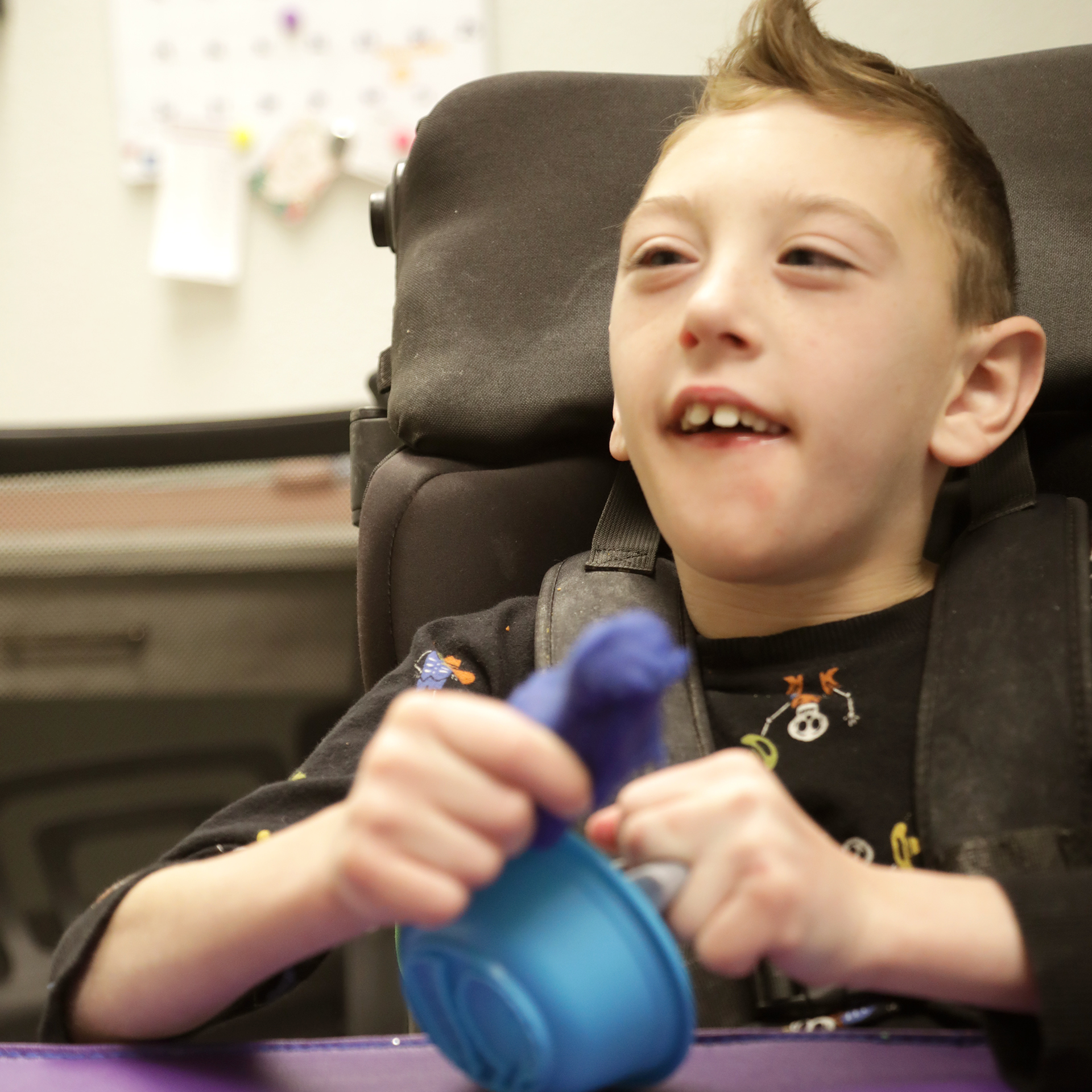How Behavior Analysis Supports Emotional Well-Being in Children


Exploring the Role of ABA in Fostering Emotional Growth
Applied Behavior Analysis (ABA) has become a cornerstone in therapeutic approaches to enhance emotional regulation in children, particularly those on the autism spectrum or with developmental disabilities. As an evidence-based practice, its methodologies are increasingly integrated into strategies aimed at promoting emotional well-being through structured interventions and family involvement.
Understanding Applied Behavior Analysis (ABA)

What is Applied Behavior Analysis (ABA) and how does it work to enhance emotional regulation in children?
Applied Behavior Analysis (ABA) is a therapeutic method grounded in the principles of learning and behavior. It primarily focuses on encouraging helpful behaviors while reducing harmful ones. By breaking down complex behaviors into smaller, observable components, therapists can identify emotional triggers that lead to anxiety in children. This diagnostic phase is crucial in tailoring interventions that help children confront their fears gradually.
ABA employs various techniques that foster emotional regulation. One significant component is the use of positive reinforcement, where children are rewarded for exhibiting positive behaviors. This approach not only encourages the repetition of these beneficial behaviors but also reinforces emotional growth by fostering a sense of achievement and well-being.
Key techniques in ABA that support emotional regulation
- Gradual Exposure: Children are guided to face anxiety-inducing situations incrementally, fostering confidence as they learn to manage their responses.
- Modeling: Practitioners demonstrate healthy emotional responses, enabling children to learn appropriate ways to cope with their feelings.
- Tailoring Interventions: Each child's experience is unique, making it essential to customize strategies to effectively address their emotional challenges.
Through these targeted approaches, ABA not only helps children enhance their emotional regulation but also promotes overall emotional health.
Positive Effects of ABA on Emotional and Mental Health Outcomes

Can ABA have positive effects on the emotional and mental health outcomes for children with autism or developmental disabilities?
Yes, ABA can have positive effects on children with autism or developmental disabilities by improving emotional and mental health outcomes. Through tailored interventions, ABA helps these children develop better communication, social skills, and emotional understanding, which can lead to enhanced well-being.
Impact on children with autism
Applied Behavior Analysis (ABA) is particularly effective for children with autism, focusing on individualized strategies to meet each child's unique needs. This customization supports emotional development by addressing specific challenges, fostering resilience, and building self-esteem. By enhancing social skills, children experience less isolation and anxiety, encouraging meaningful interactions with their peers.
Tailored interventions
One of the strengths of ABA lies in its ability to tailor interventions based on an individual’s needs. These interventions are designed to identify triggers for anxiety and problematic behaviors, providing targeted coping strategies. For instance, using gradual exposure to anxiety-inducing situations allows children to face their fears in a controlled manner, instilling confidence and promoting emotional regulation.
Enhanced communication and social skills
ABA significantly improves communication and social skills by breaking down complex tasks into manageable steps. This structured approach enhances children’s abilities to express their emotions, needs, and thoughts effectively. As they gain confidence in their communication, children often experience better emotional health, reduced stress, and improved relationships with caregivers and peers, contributing to an overall sense of well-being.
Balancing Benefits with Concerns in ABA Therapy

What are some of the benefits and potential concerns associated with ABA therapy in promoting children's social and emotional development?
Applied Behavior Analysis (ABA) has gained recognition for its measurable benefits in improving children's skills related to communication, social interaction, and emotional regulation. By breaking down complex behaviors into manageable steps, ABA promotes positive change, allowing children to understand social cues, develop essential life skills, and enhance their emotional well-being. The use of positive reinforcement in ABA further encourages desirable behaviors, thus rewarding children when they achieve personal milestones.
However, while many children exhibit significant improvements through ABA, concerns exist regarding the therapy's intensity and structure. For some young individuals, the aggressive implementation of ABA, often requiring 25-40 hours weekly, can lead to burnout or emotional fatigue. Additionally, the necessity for individualized treatment cannot be overstated; therapies designed without focusing on the unique emotional experiences and needs of each child may fall short, potentially leading to a lack of spontaneity in their behaviors. Critics argue that this rigidity can dampen a child's authentic responses and limit their ability to engage flexibly in social situations.
Ultimately, it is crucial for practitioners to ensure that interventions are tailored effectively, balancing the benefits of ABA with its potential drawbacks. Engaging parents and caregivers throughout this process fosters a supportive environment that can help children thrive emotionally and socially.
ABA's Role During Public Health Challenges

How can ABA therapy support children dealing with mental health challenges, especially amid public health issues like COVID-19?
ABA therapy supports children dealing with mental health challenges by providing structured strategies for coping and adapting to changes in their environment. When faced with the uncertainties of public health crises like COVID-19, ABA becomes particularly beneficial. Here’s how:
Structured Coping Strategies: ABA employs techniques like positive reinforcement and gradual exposure, helping children understand and manage their anxiety. By reinforcing positive behavioral responses to stressors, children can develop healthier coping mechanisms.
Maintaining Routines: A core component of ABA is the establishment of predictable routines. In times of change, such as during the pandemic, having a consistent structure helps children feel secure and reduces anxiety. This includes routine activities for learning and social interaction, tailored to individual needs.
Parental Involvement: ABA emphasizes parent and caregiver engagement in the therapeutic process. This involvement ensures that the strategies learned in therapy are consistently applied at home, creating a supportive environment conducive to emotional well-being.
In summary, ABA therapy plays a vital role in supporting children's mental health during public health challenges. By fostering coping strategies, maintaining routines, and involving caregivers, children can manage emotional challenges more effectively.
Creating Supportive Educational Environments

What role do educators and other professionals play in supporting the emotional well-being of children through behavioral interventions?
Educators and other professionals play a crucial role in fostering children's emotional well-being through the integration of behavioral interventions, like Applied Behavior Analysis (ABA), into educational settings. By embedding these strategies into the classroom, they help create supportive environments conducive to learning and emotional growth.
Integration into schools
Incorporating ABA into school systems involves training educators to recognize anxiety triggers and implement positive reinforcement techniques. This helps children manage their emotions effectively while learning essential skills. With structured support, educators enhance communication and social interactions, making the learning experience more enriching.
Monitoring and adjusting interventions
Ongoing monitoring is vital in evaluating the effectiveness of interventions. Educators must assess children's responses to behavioral strategies regularly. They can document progress, observe changes in behavior, and adjust techniques to suit each child's unique learning and emotional needs. This tailored approach not only optimizes the behavioral interventions but also reinforces a child's emotional resilience and independence.
The Power of Positive Reinforcement in ABA
Techniques of Positive Reinforcement
Positive reinforcement is a cornerstone of Applied Behavior Analysis (ABA) therapy. This technique involves rewarding children when they display positive behaviors. These rewards can take various forms, such as verbal praise, small treats, or additional playtime. By associating positive experiences with good behavior, children are more likely to repeat these actions in the future.
Building Positive Behaviors
Using positive reinforcement helps build a foundation for healthier behavior patterns. When children are rewarded for expressing themselves, managing emotions, or engaging appropriately with peers, they develop essential skills and behaviors. This approach encourages children to focus on what they can do well, rather than just penalizing negative behaviors.
Emotional Growth and Confidence
The emphasis on positive reinforcement nurtures emotional growth, allowing children to gain confidence over time. As they experience success through incremental achievements, their self-esteem flourishes. Children learn to manage anxiety more effectively, fostering a sense of emotional resilience that can lead to improved overall well-being. This proactive strategy not only supports emotional regulation but also builds the child's capacity to face future challenges with confidence.
Involving Parents and Caregivers in ABA
Importance of parental involvement
Parental involvement is crucial in Applied Behavior Analysis (ABA) therapy, offering a vital support system for children. When parents engage actively, they reinforce the strategies and techniques learned in therapy sessions, creating a cohesive experience that extends beyond the therapy room. This partnership fosters consistency in behavior management and emotional support, significantly contributing to a child's progress.
Ensuring strategy consistency
Involving parents and caregivers ensures that the strategies developed during ABA sessions are implemented uniformly at home. This consistency helps children learn more effectively as they encounter the same expectations and responses in both environments. By adopting these techniques across different settings, parents can help reduce anxiety and encourage positive behaviors in their children.
Building supportive home environments
A supportive home environment is paramount for emotional health and development. ABA emphasizes the importance of creating spaces where children feel safe and understood. By collaborating with therapists, parents can better understand their child's triggers and learning styles, which allows them to respond appropriately. This cooperative approach enhances the child's emotional well-being, promoting resilience and confidence as they navigate challenges.
Structured Teaching and Life Skills Development
Skill Acquisition Through ABA
Applied Behavior Analysis (ABA) focuses on skill acquisition by breaking complex tasks into manageable steps. This method helps children, especially those on the autism spectrum, learn essential life skills gradually. Each skill is reinforced through positive feedback, ensuring that children feel motivated to achieve more.
Enhancing Communication
Effective communication is a vital area where ABA proves beneficial. By dissecting the communication process into smaller components, ABA enables children to express their needs and grasp social cues better. This structured approach significantly enhances their ability to engage with peers and adults, contributing to overall emotional and social well-being.
Fostering Independence
Independence is a key goal of ABA therapy. By teaching essential life skills, such as self-care and problem-solving, ABA empowers children to handle tasks and challenges on their own. This newfound independence not only builds confidence but also alleviates pressure on caregivers, creating a more supportive home and social environment.
| Aspect | ABA Contribution | Outcome |
|---|---|---|
| Skill Acquisition | Breaks tasks into manageable steps | Enhanced ability to learn and perform |
| Communication | Teaches communication through structured methods | Improved social interactions |
| Independence | Encourages self-care and problem-solving skills | Increased confidence and reduced caregiver burden |
Legislation and Policy Support for ABA Implementation
Government Endorsements
Research indicates that governments in both Canada and the U.S. endorse Applied Behavior Analysis (ABA) as an evidence-based practice for children with Autism Spectrum Disorders (ASD). This recognition emphasizes the legitimacy and effectiveness of ABA therapy in improving various developmental outcomes.
Policy Frameworks
Many educational settings are now integrating ABA principles into their frameworks to support students' emotional and behavioral health. Initiatives like the Multi-Tiered Systems of Support (MTSS) not only prioritize improving behavioral expectations but also aim to enhance students' social-emotional needs comprehensively.
Funding for Evidence-Based Practices
Funding plays a crucial role in the implementation of ABA interventions. Current recommendations highlight the necessity for increased funding directed toward mental health services in schools. By allocating resources toward evidence-based practices, schools can ensure that interventions like ABA therapy are accessible and effectively utilized, benefiting student emotional well-being across diverse educational environments.
| Policy Support Aspect | Description | Impact on ABA Implementation |
|---|---|---|
| Government Endorsements | Endorsement by local governments for ABA as evidence-based treatment | Validates ABA methodologies and encourages adoption. |
| Policy Frameworks | Integration of ABA principles in educational systems like MTSS | Ensures systematic support for students’ wellbeing. |
| Funding Initiatives | Increased funding for mental health services in schools | Expands access to ABA interventions and resources. |
Integrating ABA for Holistic Child Development
Applied Behavior Analysis is a transformative approach that not only enhances emotional regulation but also bolsters social and communication skills crucial for children's overall well-being. With engagement from families, educators, and policymakers, these interventions can lead to substantial positive changes in children's emotional health, paving the way for a supportive and responsive development journey.
References
- Applied Behavior Analysis for Reducing Anxiety in Children
- The Role of Applied Behavior Analysis in Child Development
- [PDF] Supporting Child and Student Social, Emotional, Behavioral, and ...
- Applied Behavior Analysis: Supporting Emotional Regulation
- 7 Surprising Benefits of ABA Therapy for Kids You Need to Know
- Applied Behaviour Analysis (ABA) and autistic children
- Applied Behavior Analysis: What Is It and How Does It Work? - WebMD
- Applied Behavior Analysis in Children and Youth with Autism ...
- Applied Behavior Analysis (ABA) | Autism Speaks
- What Is Applied Behavior Analysis (ABA)? - Child Mind Institute
Recent articles

How Pediatric Therapy Helps Kids Thrive across Montana and Wyoming
A supportive guide for families exploring therapy options in Billings, Butte, Missoula or Sheridan.

How to Choose the Right Pediatric Therapy Clinic in Billings, Montana
A Parent‑Friendly Guide To Finding The Best Support For Your Child

Expressive Speech Delay 2-Year-Old
Understanding and Addressing Expressive Speech Delay in Toddlers

How Speech Recognition Works
Unlocking the Power of Speech Recognition in Therapy and Healthcare

Autism and Head Size
Understanding the Complex Relationship Between Autism and Head Size

Occupational Therapy in Autism
Enhancing Independence and Quality of Life Through Occupational Therapy in Autism

